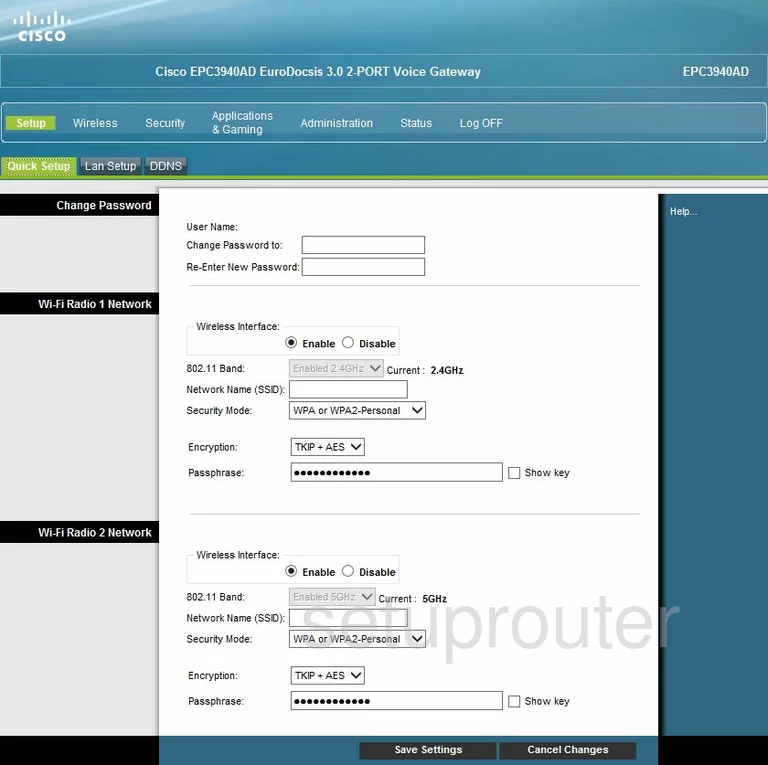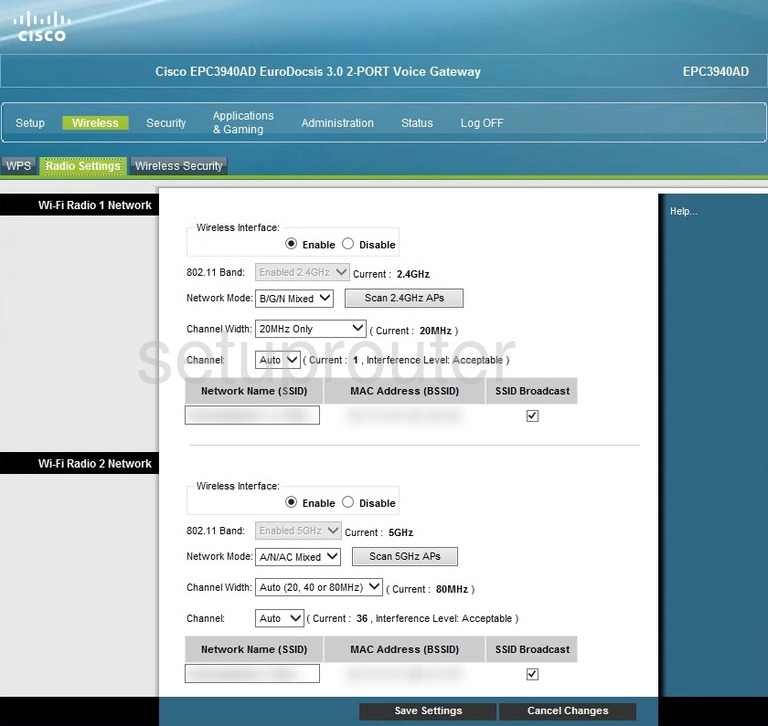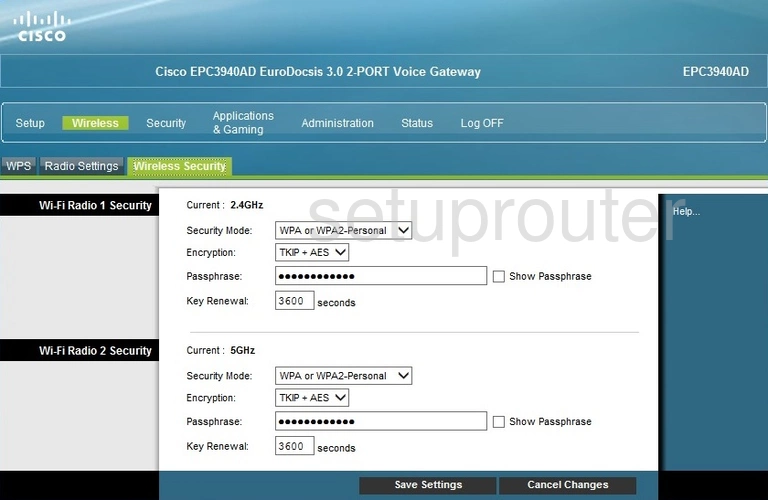The Cisco EPC3940AD router is considered a wireless router because it offers WiFi connectivity. WiFi, or simply wireless, allows you to connect various devices to your router, such as wireless printers, smart televisions, and WiFi enabled smartphones.
Other Cisco EPC3940AD Guides
This is the wifi guide for the Cisco EPC3940AD. We also have the following guides for the same router:
- Cisco EPC3940AD - How to change the IP Address on a Cisco EPC3940AD router
- Cisco EPC3940AD - Cisco EPC3940AD Login Instructions
- Cisco EPC3940AD - Cisco EPC3940AD User Manual
- Cisco EPC3940AD - How to change the DNS settings on a Cisco EPC3940AD router
- Cisco EPC3940AD - How to Reset the Cisco EPC3940AD
- Cisco EPC3940AD - Cisco EPC3940AD Screenshots
- Cisco EPC3940AD - Information About the Cisco EPC3940AD Router
WiFi Terms
Before we get started there is a little bit of background info that you should be familiar with.
Wireless Name
Your wireless network needs to have a name to uniquely identify it from other wireless networks. If you are not sure what this means we have a guide explaining what a wireless name is that you can read for more information.
Wireless Password
An important part of securing your wireless network is choosing a strong password.
Wireless Channel
Picking a WiFi channel is not always a simple task. Be sure to read about WiFi channels before making the choice.
Encryption
You should almost definitely pick WPA2 for your networks encryption. If you are unsure, be sure to read our WEP vs WPA guide first.
Login To The Cisco EPC3940AD
To get started configuring the Cisco EPC3940AD WiFi settings you need to login to your router. If you are already logged in you can skip this step.
To login to the Cisco EPC3940AD, follow our Cisco EPC3940AD Login Guide.
Find the WiFi Settings on the Cisco EPC3940AD
If you followed our login guide above then you should see this screen.

Once you have finished logging into the Cisco EPC3940AD router you should see the page above.
You can change the wireless settings on this page or click the option at the top of the page labeled Wireless then Radio Settings.
Change the WiFi Settings on the Cisco EPC3940AD

On this page you are able to change the bandwidth, channel, and SSID.
To change the bandwidth, click the drop down list labeled 802.11 Band. Then choose the bandwidth you would rather use. For rural users I recommend using 2.4GHz. For extremely crowded areas such as apartment living it may be better to use 5GHz.
If you want or need to change the Channel, open up the channel drop down list and choose the channel you want to use. If you are using 2.4GHz we recommend sticking to channels 1,6 or 11. For more information on channels read our WiFi Channels guide
Below that you should see a box labeled Network Name (SSID). This is the wireless name and should be unique. We recommend avoiding personal information and router specific information. Learn what an SSID is and more in our wireless names guide.
When you are finished with those changes click the Save Settings button. Then in the secondary bar at the top of the page click Wireless Security.

On this new page go to the section that you chose for your wireless band. For instance if you chose on the previous page to use 2.4GHz fill in the section that reads Current: 2.4GHz.
In the drop down list labeled Security Mode choose the type of security you want to use for your network. The strongest option is WPA2-Personal. Learn what this means and what your other options are in our guide titled WEP vs. WPA.
Set the Encryption to AES.
Finally you need to set the Passphrase. This is the network password. This is the not the password used to access the router interface. This is the password you use to access your local network. It is very important that this password be strong. I recommend using at least 14 characters here. More tips can be found in our Choosing a Strong Password guide.
That's it, simply click the Save Settings button at the bottom of the page.
Possible Problems when Changing your WiFi Settings
After making these changes to your router you will almost definitely have to reconnect any previously connected devices. This is usually done at the device itself and not at your computer.
Other Cisco EPC3940AD Info
Don't forget about our other Cisco EPC3940AD info that you might be interested in.
This is the wifi guide for the Cisco EPC3940AD. We also have the following guides for the same router:
- Cisco EPC3940AD - How to change the IP Address on a Cisco EPC3940AD router
- Cisco EPC3940AD - Cisco EPC3940AD Login Instructions
- Cisco EPC3940AD - Cisco EPC3940AD User Manual
- Cisco EPC3940AD - How to change the DNS settings on a Cisco EPC3940AD router
- Cisco EPC3940AD - How to Reset the Cisco EPC3940AD
- Cisco EPC3940AD - Cisco EPC3940AD Screenshots
- Cisco EPC3940AD - Information About the Cisco EPC3940AD Router